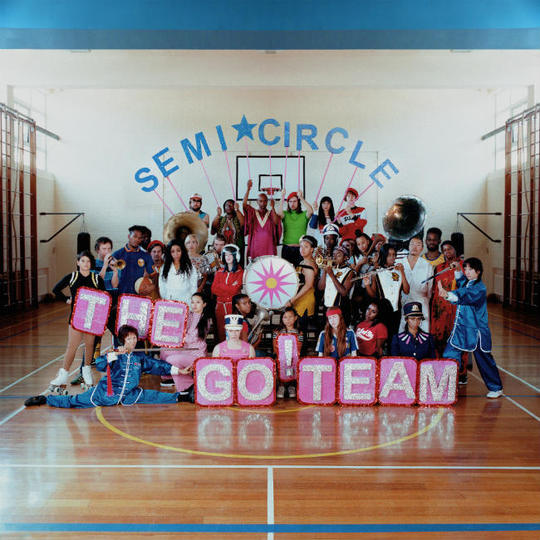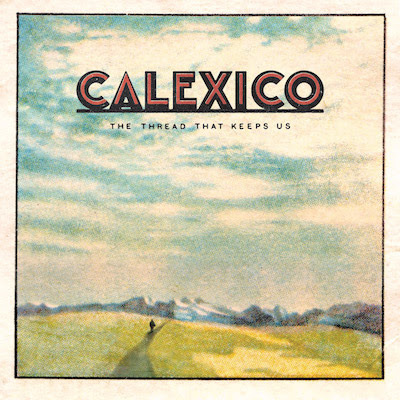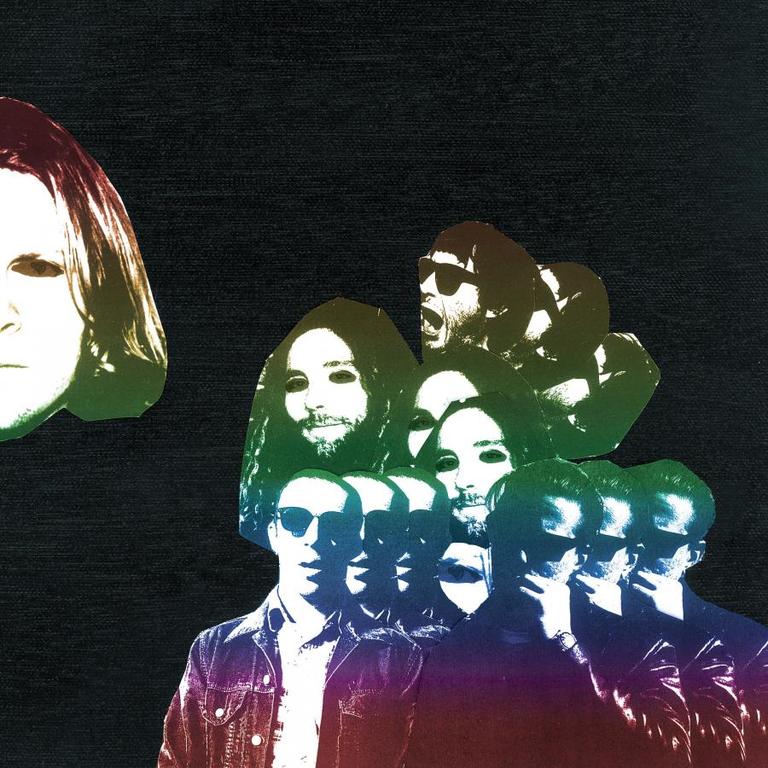Ian Parton was very particular about the gym that appears on the cover of Semicircle. It had to be the old-fashioned kind from the Eighties, the sort that a young Parton might have played in and the sort that produces a feeling of nostalgia that’s integral to The Go! Team’s appeal. Alongside a conspicuously diverse cast, dressed up like a budget Sgt Pepper’s Lonely Hearts Club Band, the image is a visual metaphor for the sound of Semicircle, the group’s messy and ambitious fifth album.
After a decade of maturing into a sound that was subtler, and arguably less interesting, than their early records, Semicircle returns to the raucous anything-goes attitude that first earned The Go! Team critical acclaim. The band have always been celebrated for their eclecticism and this time they push their ambition to its limits. On Semicircle, there are references to psychedelic pop, Eighties hip-hop, and muzak. At many times, The Go! Team find the middle ground between styles that seem incompatible and at others, they force them together even when there isn’t any, holding everything together with the blaring brass that accompanies almost every track. If all that sounds exhausting, you’d be correct. But while Semicircle is overwhelming and sometimes clumsy, it is often very good as well.
The Go Team’s sledgehammer approach to these songs is simplistic but it has its place. ‘Mayday’ and ‘She’s Got Guns’ are exhilarating, empowering anthems that make the most of the album’s gigantic sound. Similarly, ‘Semicircle Song’ with its booming marching band and goofy star sign roll-call is a great example of the album’s ‘more is more’ ideology. Some of the record's more melodic tracks are also highlights, like ‘The Answer’s No - Now What’s the Question?’, which takes the sounds of Revolver-era Beatles and gives them to a Sixties girl group.
However, while Semicircle gets full marks for its intention, it is not an unqualified success. The album’s lo-fi mix successfully mimics the sound of a school gymnasium but it doesn’t always give a good reason for doing so. Against the more raucous singles, the album’s softer songs tend to get lost in the mix and would have been helped by a more nuanced approach. At the other end of the scale, ‘All the Way Live’ is let-down slightly by its thunderous production, surrendering its groove in favour of an oppressive thump.
Nevertheless, even during its less successful moments, Semicircle is always an entertaining and surprising listen. That is largely due to the number of risks that Parton takes on the album; most notably, travelling to Detroit to find the youth choir who feature on some of Semicircle’s best tracks. Its these sorts of gambles that produce many of this album’s best moments and inevitably contribute to its few weaknesses. But the willingness to try something new, anything new, is what makes this album such a joyful experience.
After the patchy Rolling Blackouts and uninspiring The Scene Between, Semicircle manages to reconnect the group with the childish creativity that powers their best work. The album’s appeal is somewhat limited by its reliance on nostalgia and most listeners will notice that none of these sounds are particularly new, even if the placement of them together is surprising, but this is not a major problem.Semicircle is not an album that warrants close inspection, nor does it seem to ask to be one. At a time when pop music has become increasingly political and ‘purposeful’, this album aims for much simpler pleasures. The youthful chants of ‘Mayday’ don’t speak of any political or social emergency, instead they hark back to a time when unrequited love felt like the greatest emergency you could ever face. It is in those moments where The Go! Team’s music thrives and on Semicircle, they sound like a band who have rediscovered their purpose.
-
7Conrad Duncan's Score






















